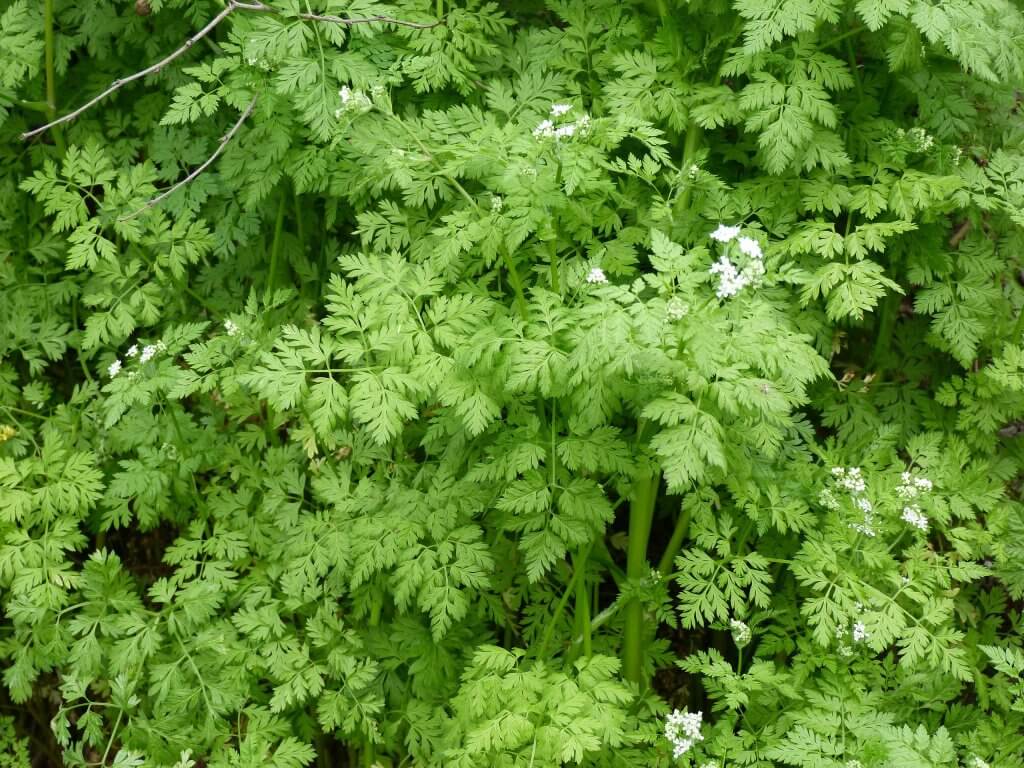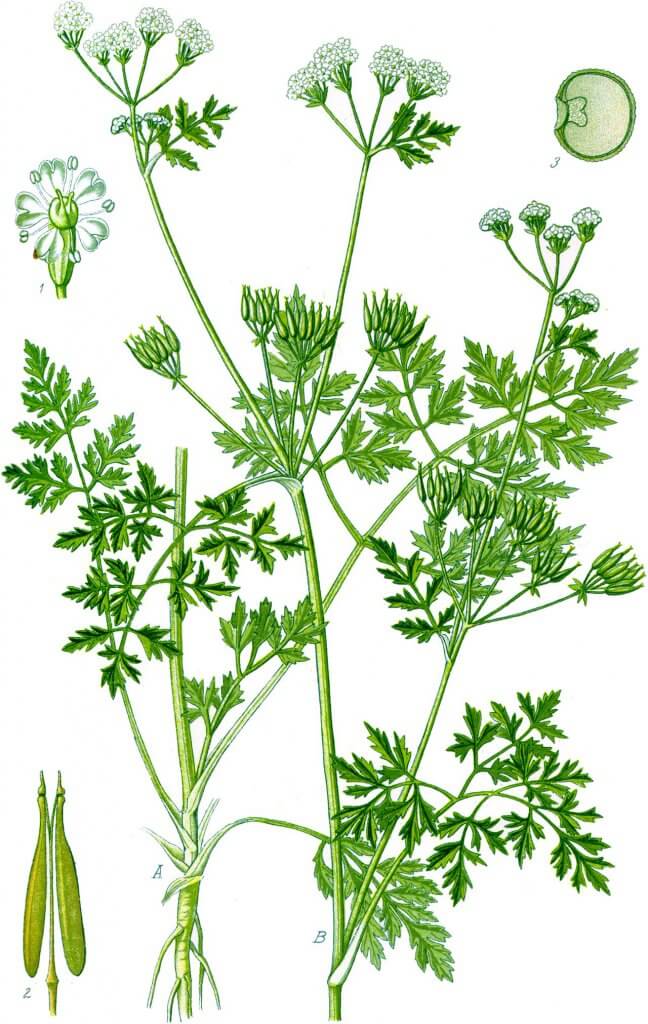Chervil (Anthriscus cerefolium) is a flavorful herb once native to Eastern Europe. It could be found growing on the hillsides of Romania and Azerbaijan. You will now find it growing wild across most of Europe. It spread throughout the Roman Empire because of its perceived medicinal and culinary values. You can also find it growing throughout North America, as it was transported across the Atlantic to be cultivated and grown for culinary use.
The plant will grow to approximately 70cm, with an array of tender, feathered and bright green leaflets. When flowering you will see long stems topped with a cluster of small white and edible flowers. The flowers and leaves are very aromatic, giving off a scent similar to anise and sweet licorice. It is closely related to parsley, for which some people can sometimes mistake it for. Other common names you may have heard of include garden chervil and French parsley.

Cultivation and History of Chervil
You can harvest the leaves and flowers of chervil year round, with an extra yield being available throughout the spring. As an annual herb, you will need to sow chervil seeds throughout the year to maintain a constant supply. It is perfect for growing in containers or on kitchen window sills within a sunny spot.
When planting in the garden the best position would be partial sunlight in summer and full sun in winter. When growing from seed ensure you plant them within its final positioning as seedlings are usually much too fragile to transplant. You should expect to see seedlings appearing within about 2 weeks. The plant will need regular watering and well drained soil to thrive. If planting in the garden, adding compost will help to give the plant a nutritious boost.
Chervil is commercially cultivated in many countries however it can be considered difficult to buy as it is not considered a widely popular herb. Many people choose to grow their own chervil from seed.
Toxicity
Chervil is safe to consume within foods and also as a herbal remedy. However, if you are pregnant or breast feeding there is a potential that chemicals within chervil could damage a developing infant.
The plant contains certain chemicals that can promote a photosensitive reaction when in contact with the skin. In rare instances many gardeners have suffered from phytophotodermatitis. This occurs after high sun exposure when the skin has been coated with a light sensitive substance found within some plants.
Uses
Culinary uses of Chervil
French cuisines use chervil as one of their staple herb flavorings within the notable collection of ‘fines herbes’. These include, tarragon, chives, parsley and chervil. These herbs are delicate in nature, so you must add them at the last minute of cooking. This will ensure their mild and delicate flavor is retained.
Use chervil to flavor chicken and other poultry dishes, seafood and recipes that require delicate flavoring. It adds a wonderful flavoring to soups and sauces, and also vegetable dishes. Freeze fresh leaves with a mixture of butter or oil in an ice cube tray to keep them on hand for recipes. You can dry the leaves, however due to their delicate nature, the aroma and flavor may be largely lost.

Medicinal uses of Chervil

European folk medicines and the Romans used chervil for a number of minor ailments and illnesses. These include digestive complaints, high blood pressure, coughs and hiccups. Many herbal remedies were created to also relieve the symptoms of eczema, gout and small infections. Healers would boil the roots or infuse the leaves in tea.
Chervil provides more than just great flavor, it is also a great source of Vitamins A and C, iron, potassium and antioxidants.
Did you know…
The scientific name of Chervil, ‘cerefolium’ is said to have been taken from the ancient Greek meaning of ‘chairephyllon’, which means ‘leaves of joy’.
Conclusion
In conclusion, chervil is a delicate and flavorful herb that can add a beautiful texture to your herb garden. Grow from seed and keep on a windowsill for easy access whilst you experiment with a number of French recipes and dishes. They also make fantastic companion plants. Growing chervil with radishes and lettuce can improve their flavor and also keep pests and slugs at bay.
—————Written by Hannah Sweet
Hannah is a freelance writer and graphic designer from the UK. With a penchant for travelling, photography and all things botanical, she enjoys writing about a wealth of topics and issues, from conservation and slow living, to design and travel. Learn more about her writing and design services at www.sweetmeanders.co
Many of our readers find that subscribing to Eat The Planet is the best way to make sure they don't miss any of our valuable information about wild edibles.
See our privacy policy for more information about ads on this site






